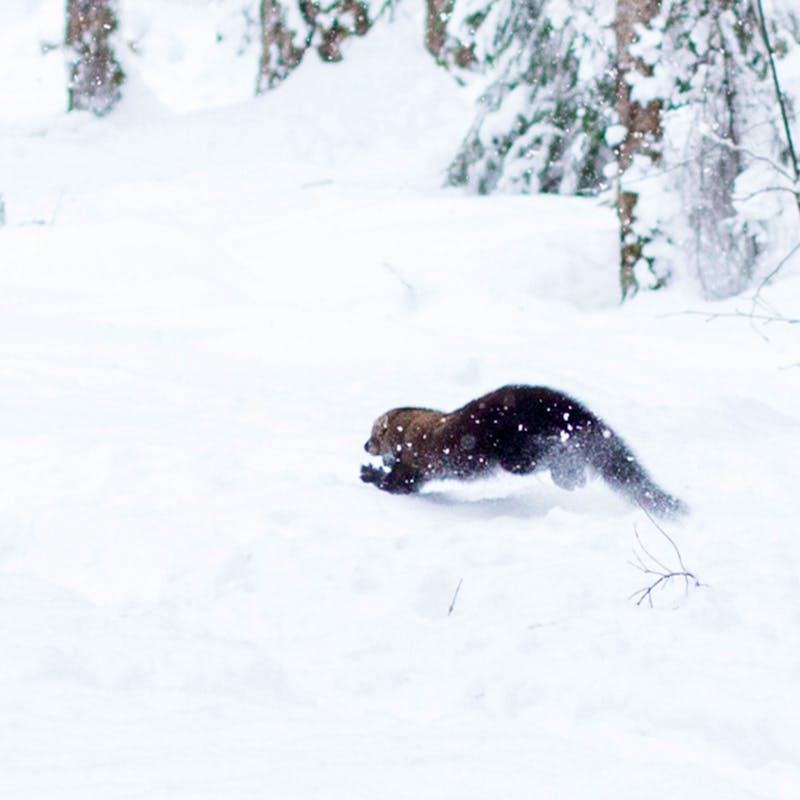By Melanie Gade with contributions from Courtney Sexton
Washington Wildlife Officials Put Coexistence First: Washington wildlife officials are making every effort to stop further livestock-wolf conflict in the Northeastern part of the state after two cows were killed there early in July. Instead of relying on expensive lethal control strategies to kill wolves, we’re thrilled to see the Washington Department of Fish and Wildlife (WDFW) work with the livestock operation to implement nonlethal tools designed to stop future conflicts from occurring. Wildlife officials moved the cows away from where the depredation occurred and they have deployed two range riders to patrol the area. They have also put out fladry to deter wolves from coming back. In addition, this week WDFW reached out to Defenders of Wildlife to ask for 10 Foxlights – a coexistence tool we’ve employed successfully in other areas – which emits sporadic strobe lights, feigning a human presence. We’re thrilled to see WDFW shape their wolf management strategies to prioritize nonlethal tools over simply killing wolves. We’ll continue to work with the WDFW to monitor this evolving situation and with the livestock operation to ensure that these tools are correctly employed.
Activists Say “No” To Mexican Gray Wolf Extinction Bill: This week, more than 100 activists in southern New Mexico staged a protest outside of Congressman Pearce’s office, speaking out against Congressmen Pearce and Gosar’s Mexican gray wolf extinction bill. If passed, the bill would remove Endangered Species Act protections for Mexican gray wolves, the most endangered population of gray wolves in the country. At the rally, activists even went into the Congressman’s office to request a “stay of execution” on the death sentence for lobos. Outside of this successful event, many other lobo supporters have been speaking out in the media, letting the world know how important wolves are to Arizona and New Mexico. Check out these great photos of the Mexican gray wolf rally and stay tuned for updates on the egregious bill.

Tightened Restrictions on Bobcat Trapping Will Protect Imperiled Lynx and Wolverines: This week the Montana Fish, Wildlife and Parks Commission tightened restrictions on the size and type of traps permitted in designated lynx protection zones near Yellowstone National Park. One of the largest consequences of trapping is that other animals often fall victim to the snares and traps. This is frequently true in Montana where there are dozens of vulnerable and imperiled species – lynx and wolverines, to name just a few. Under the Endangered Species Act (ESA), it is illegal to trap a threatened or endangered species regardless of whether the animal was the target of the trap – and lynx have been listed on the ESA as a threatened species since 2001. According to WildEarth Guardians, at least 15 lynx were caught in traps since 2001 in Montana, the last incident taking place December 2014. By reducing the size of the traps and the type of bait permitted in the traps, lynx are less likely to be unintentionally trapped. This week’s ruling also ensures that the wolverine trapping season in Montana will remain closed for an additional two years, with a requirement to consider the best available science before the season can be re-opened. We’re very pleased to see these new restrictions in place. While they’re long overdue, these new restrictions will mean the difference between life and death for some of Montana’s imperiled species moving forward.
New National Monument Will Be Safe Haven for Countless California Species: This week the Obama administration announced the designation of three new national monuments, including a new monument in northern California: Berryessa Snow Mountain. The Berryessa Snow Mountain region of northern California’s Inner Coast Ranges is home to a wide variety of California wildlife, including mountain lions, bears, deer, osprey, native trout, bald eagles and elusive Pacific fishers. We’re thrilled to see President Obama recognize and permanently protected this distinctive area as a national monument!
 Is the U.S. abandoning Red Wolves? There may be as few as 50 Red Wolves left in the wild – and now the U.S. Fish and Wildlife Service (FWS) is making reckless decisions that could destroy any remaining hope these struggling wolves have for survival. FWS recently announced plans to put its efforts to recover Red Wolves on hold and we fear they may abandon the Red Wolf Recovery Program entirely. Just as things were entering a critical stage for Red Wolves, FWS delivered this blow – and is now refusing to move forward until they “study” the program more. If the U.S. Fish and Wildlife Service doesn’t step up and get serious about recovering Red Wolves soon, these critically endangered wolves will slide toward extinction in the wild – not because of natural causes but because of bureaucratic foot-dragging and power politics. Stand up for Red Wolves now!
Is the U.S. abandoning Red Wolves? There may be as few as 50 Red Wolves left in the wild – and now the U.S. Fish and Wildlife Service (FWS) is making reckless decisions that could destroy any remaining hope these struggling wolves have for survival. FWS recently announced plans to put its efforts to recover Red Wolves on hold and we fear they may abandon the Red Wolf Recovery Program entirely. Just as things were entering a critical stage for Red Wolves, FWS delivered this blow – and is now refusing to move forward until they “study” the program more. If the U.S. Fish and Wildlife Service doesn’t step up and get serious about recovering Red Wolves soon, these critically endangered wolves will slide toward extinction in the wild – not because of natural causes but because of bureaucratic foot-dragging and power politics. Stand up for Red Wolves now!




